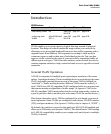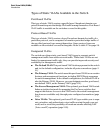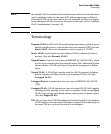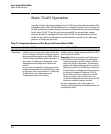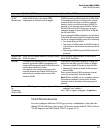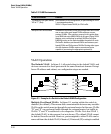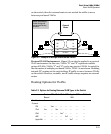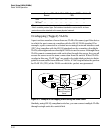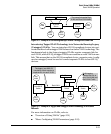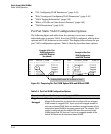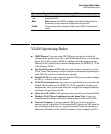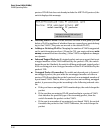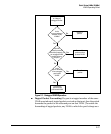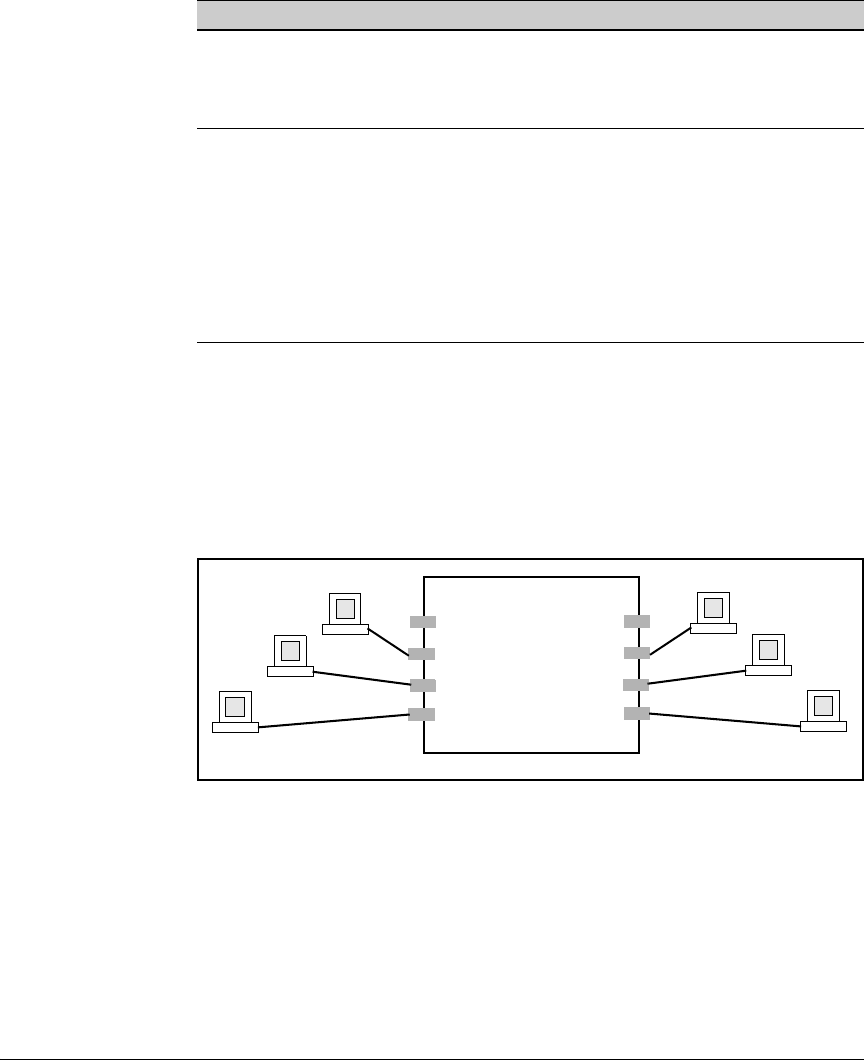
Static Virtual LANs (VLANs)
Static VLAN Operation
Table 2-2. VLAN Environments
VLAN Environment Elements
The default VLAN (port-based; In the default VLAN configuration, all ports belong to VLAN
VID of “1”) Only 1 as untagged members.
VLAN 1 is a port-based VLAN, for IPv4 traffic.
Multiple VLAN Environment In addition to the default VLAN, the configuration can include
one or more other port-based VLANs and one or more
protocol VLANs. (The switches covered in this guide allow
up to 2048 (vids up to 4094) VLANs of all types.) Using VLAN
tagging, ports can belong to multiple VLANs of all types.
Enabling routing on the switch enables the switch to route
IPv4 traffic between port-based VLANs and between port-
based VLANs and IPv4 protocol VLANs. Routing other types
of traffic between VLANs requires an external router
capable of processing the appropriate protocol(s).
VLAN Operation
The Default VLAN. In figure 2-1, all ports belong to the default VLAN, and
devices connected to these ports are in the same broadcast domain. Except
for an IP address and subnet, no configuration steps are needed.
A8
A1
A7
A2
VLAN 1
A6
A3
A5
A4
Figure 2-1. Example of a Switch in the Default VLAN Configuration
Multiple Port-Based VLANs. In figure 2-2, routing within the switch is
disabled (the default). This means that communication between any routable
VLANs on the switch must go through the external router. In this case, VLANs
“W” and “X” can exchange traffic through the external router, but traffic in
VLANs “Y” and “Z” is restricted to the respective VLANs. Note that VLAN 1,
the default VLAN, is also present, but not shown. (The default VLAN cannot
be deleted from the switch. However, ports assigned to other VLANs can be
removed from the default VLAN, if desired.) If internal (IP) routing is enabled
2-10






